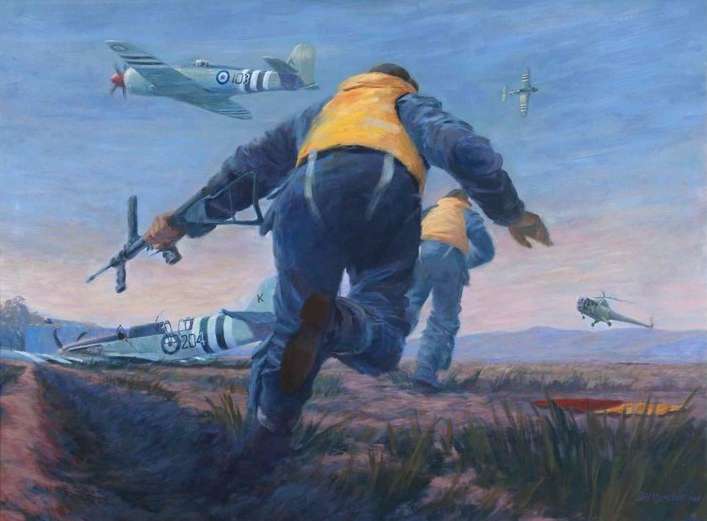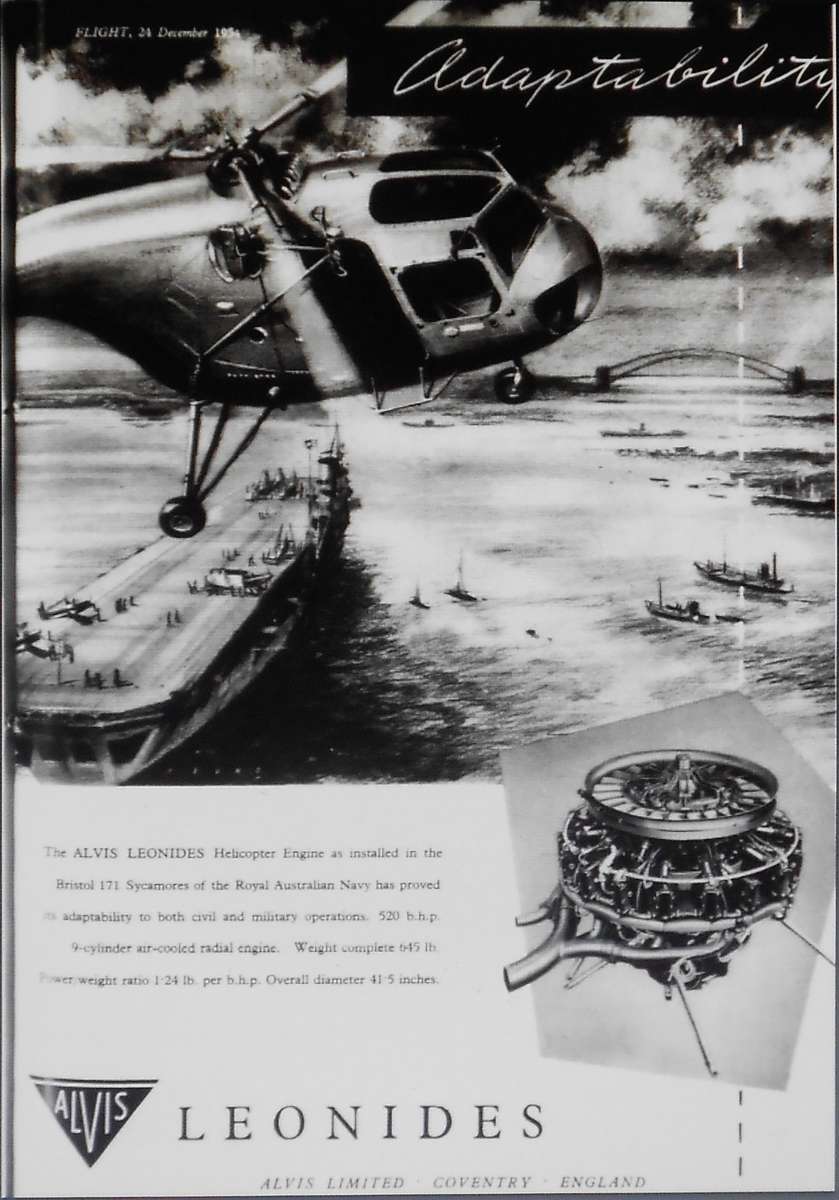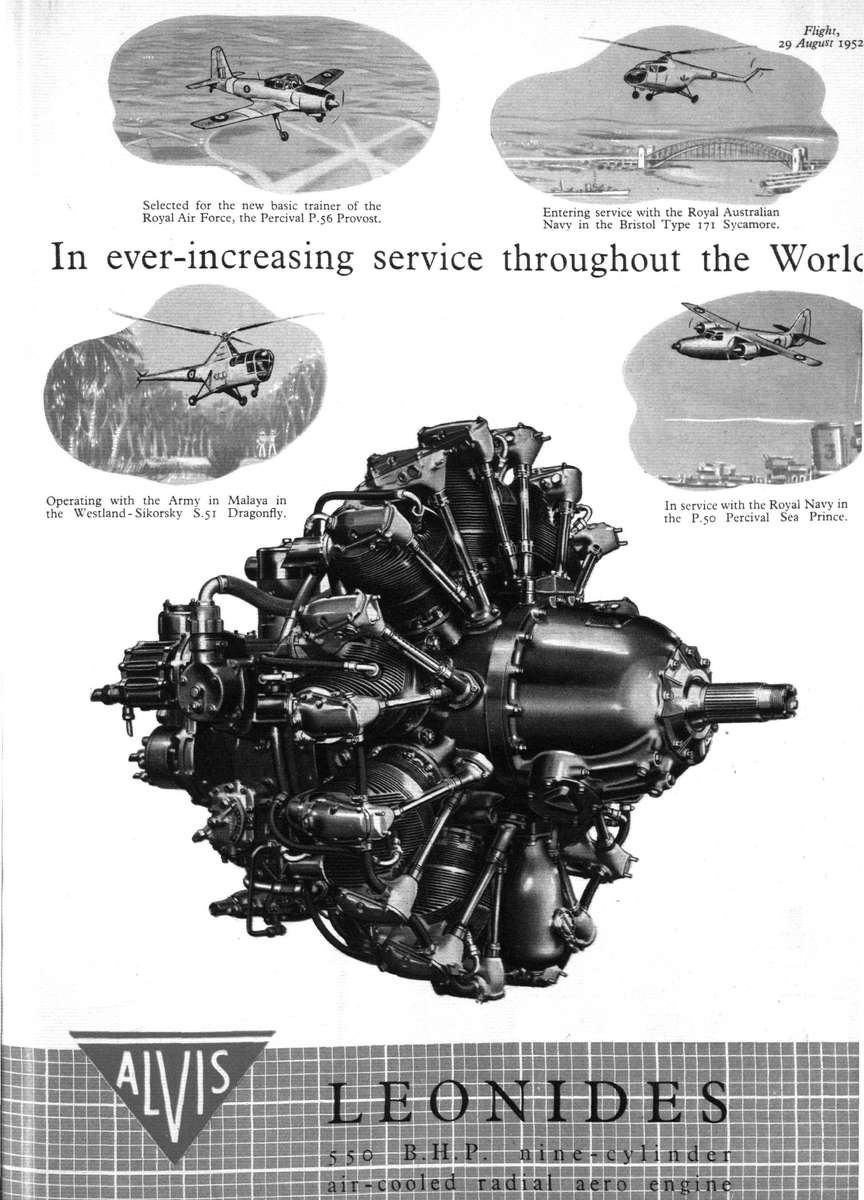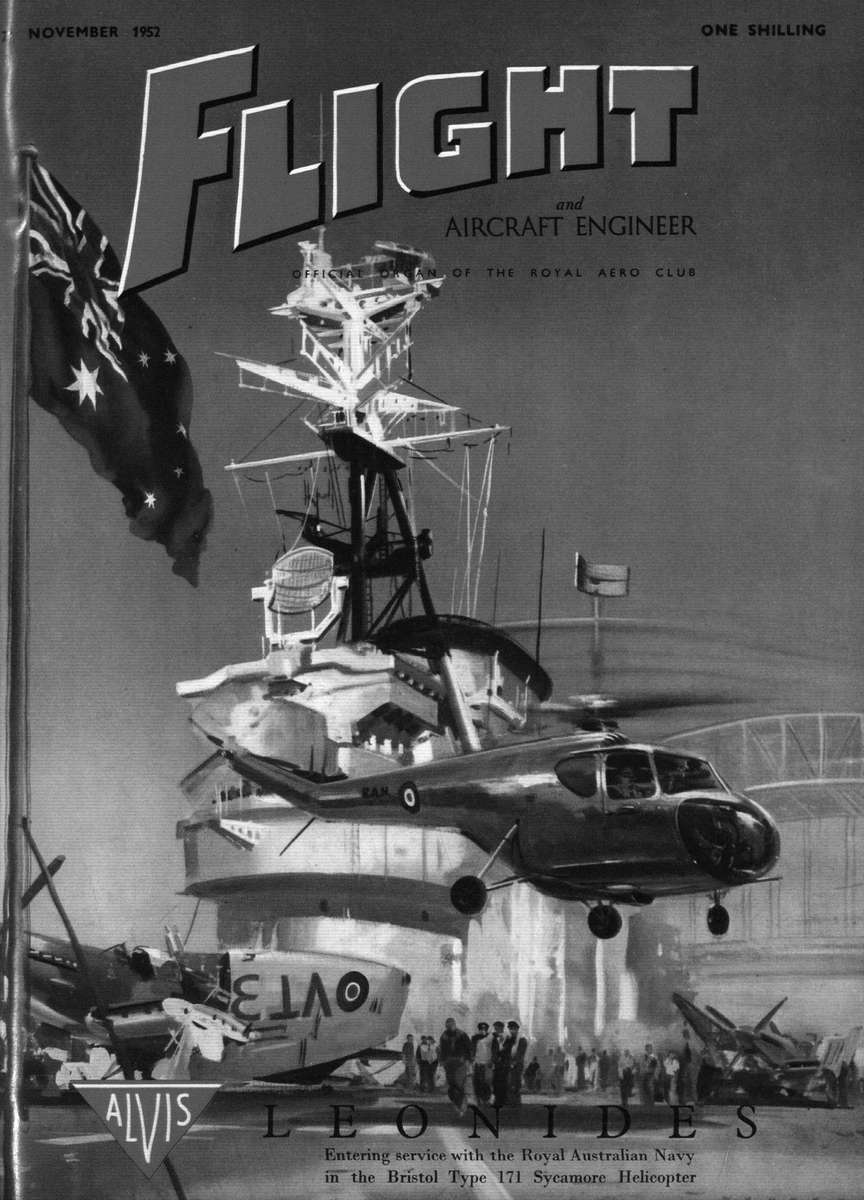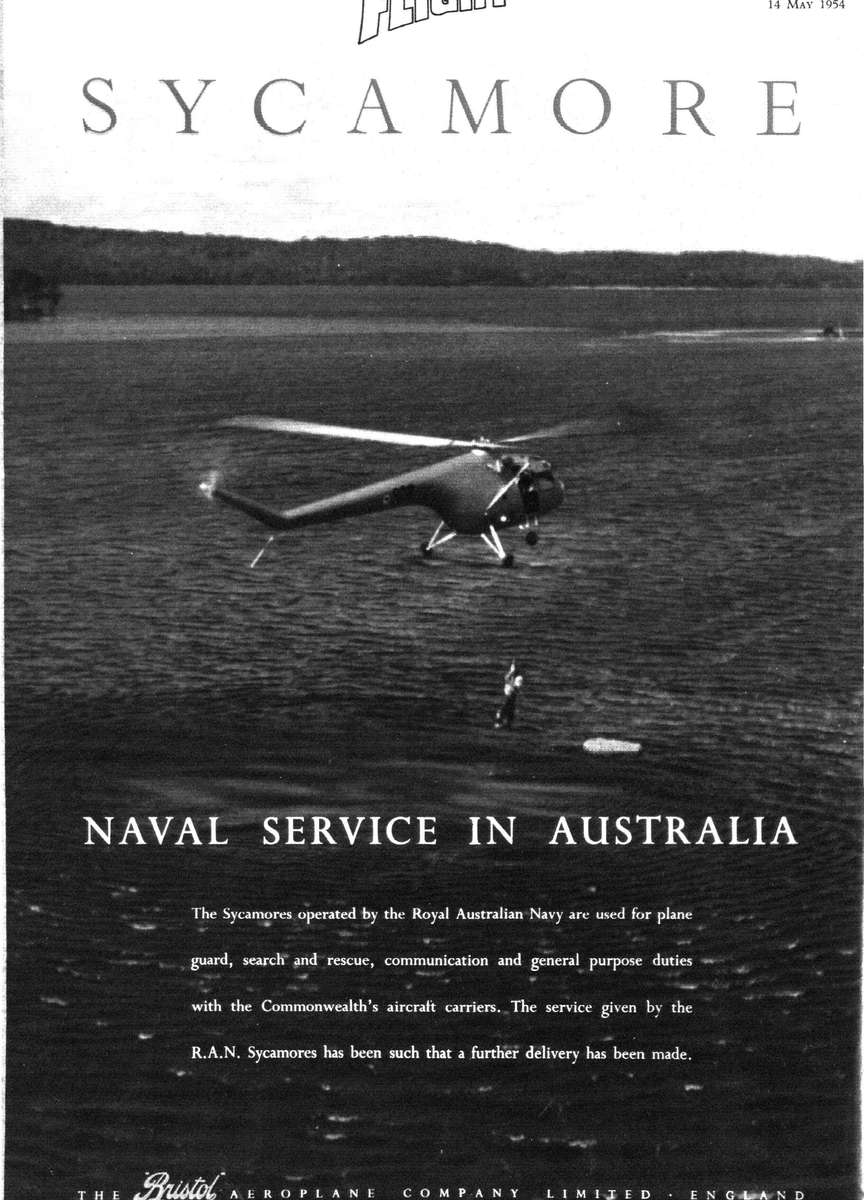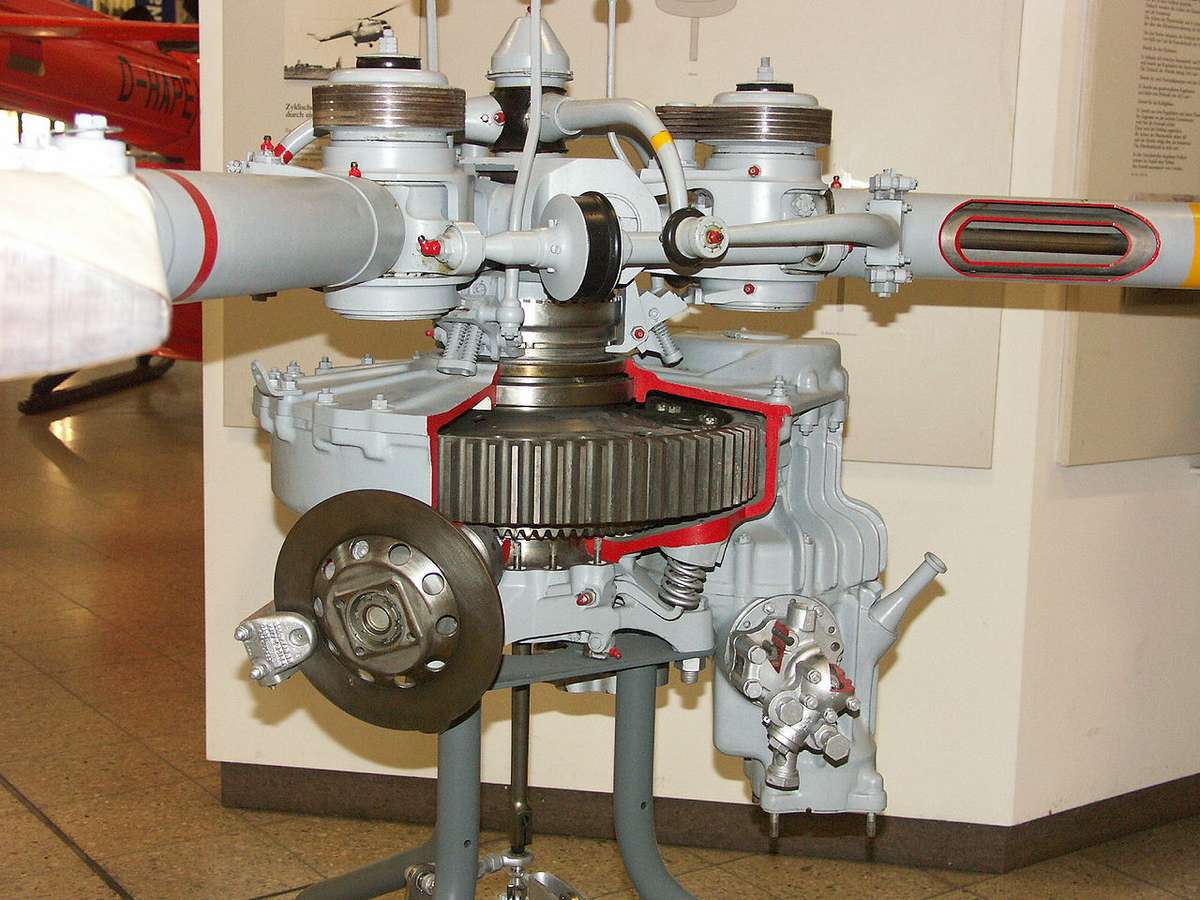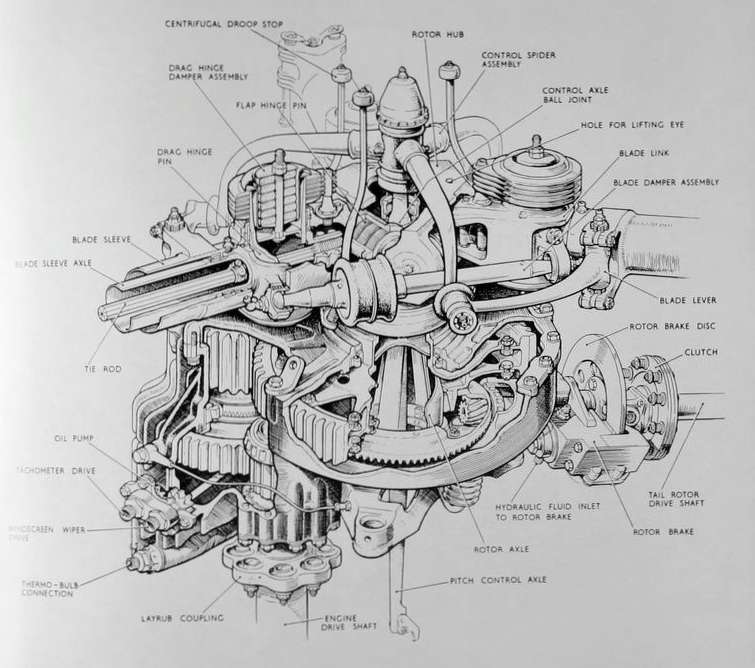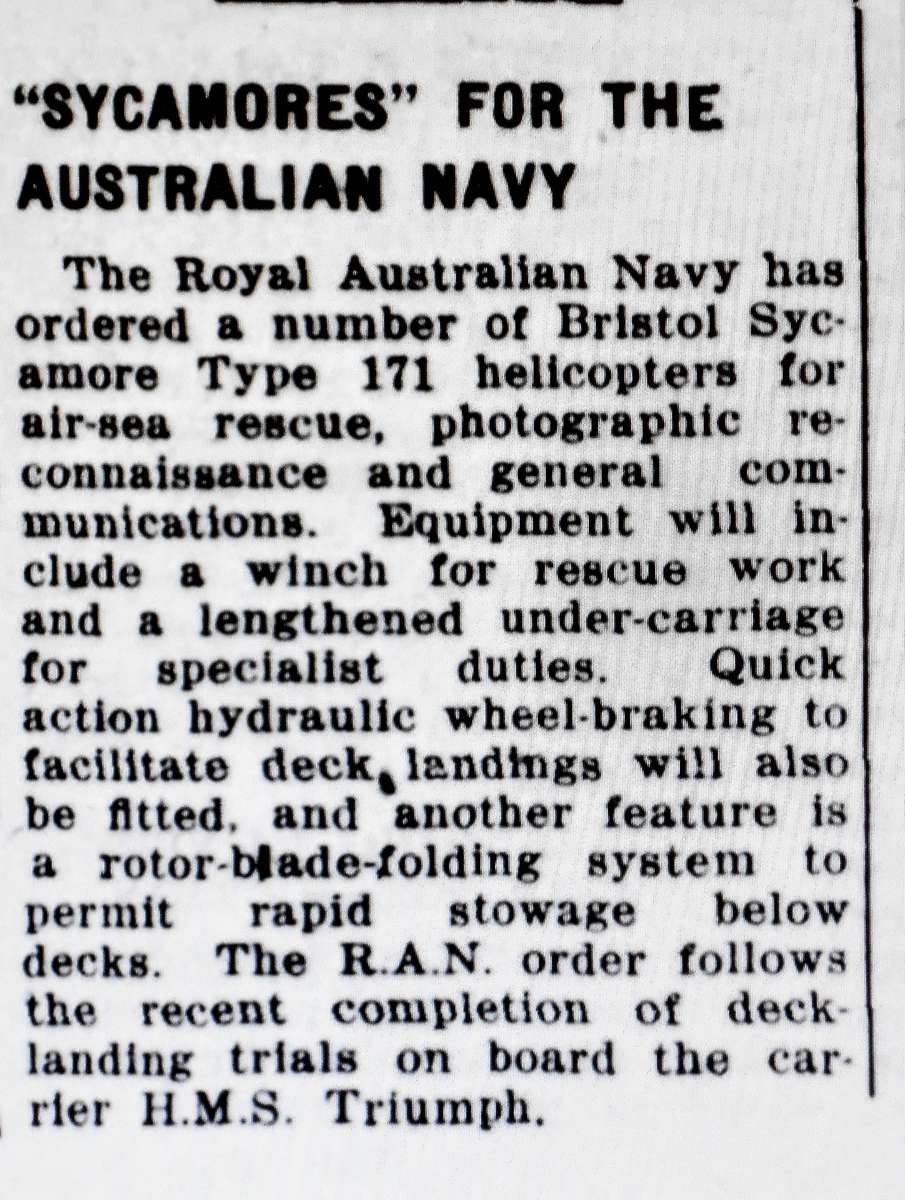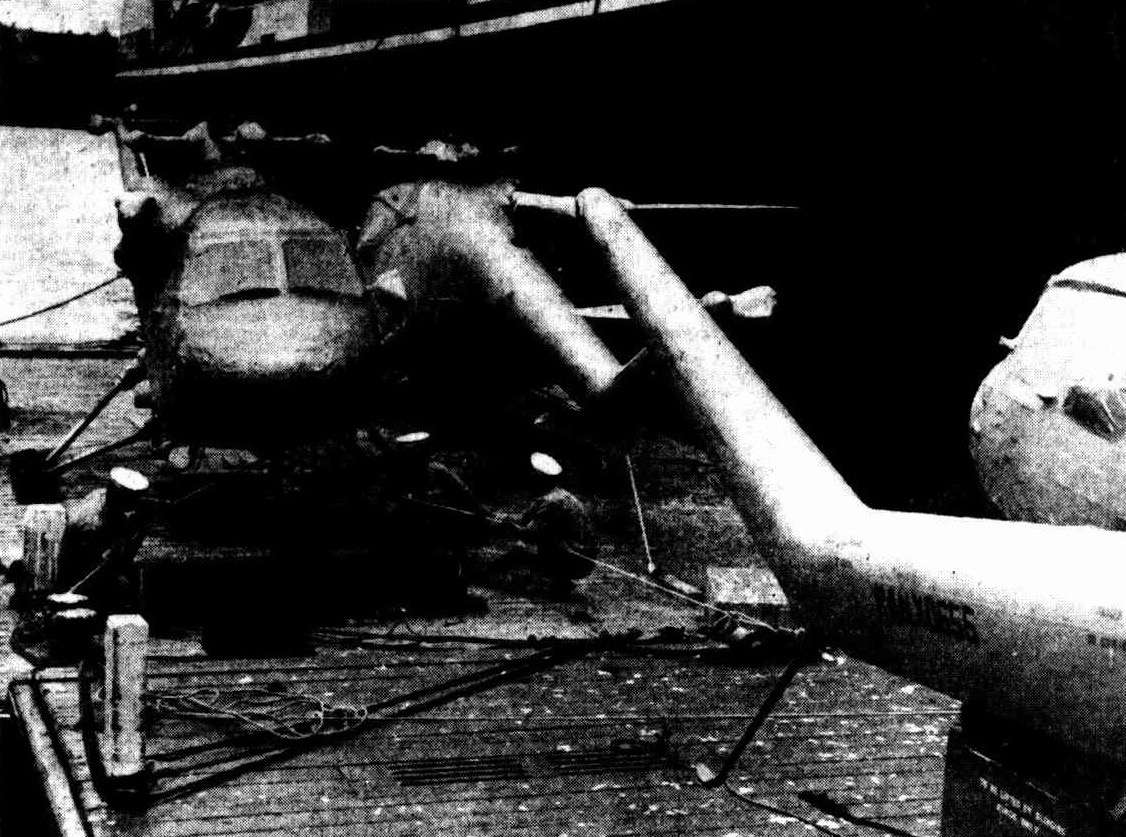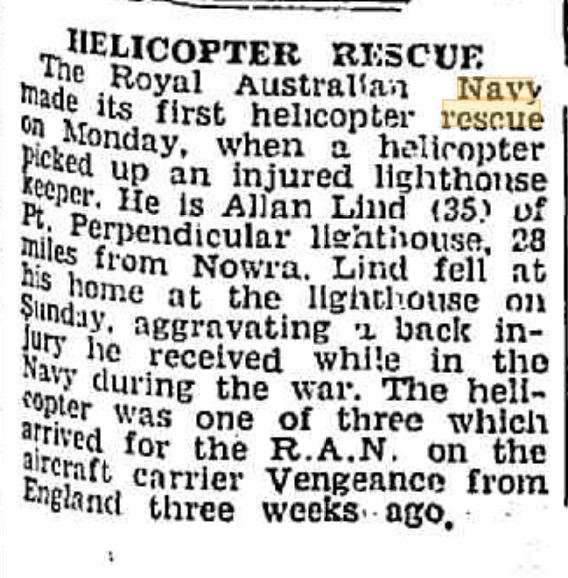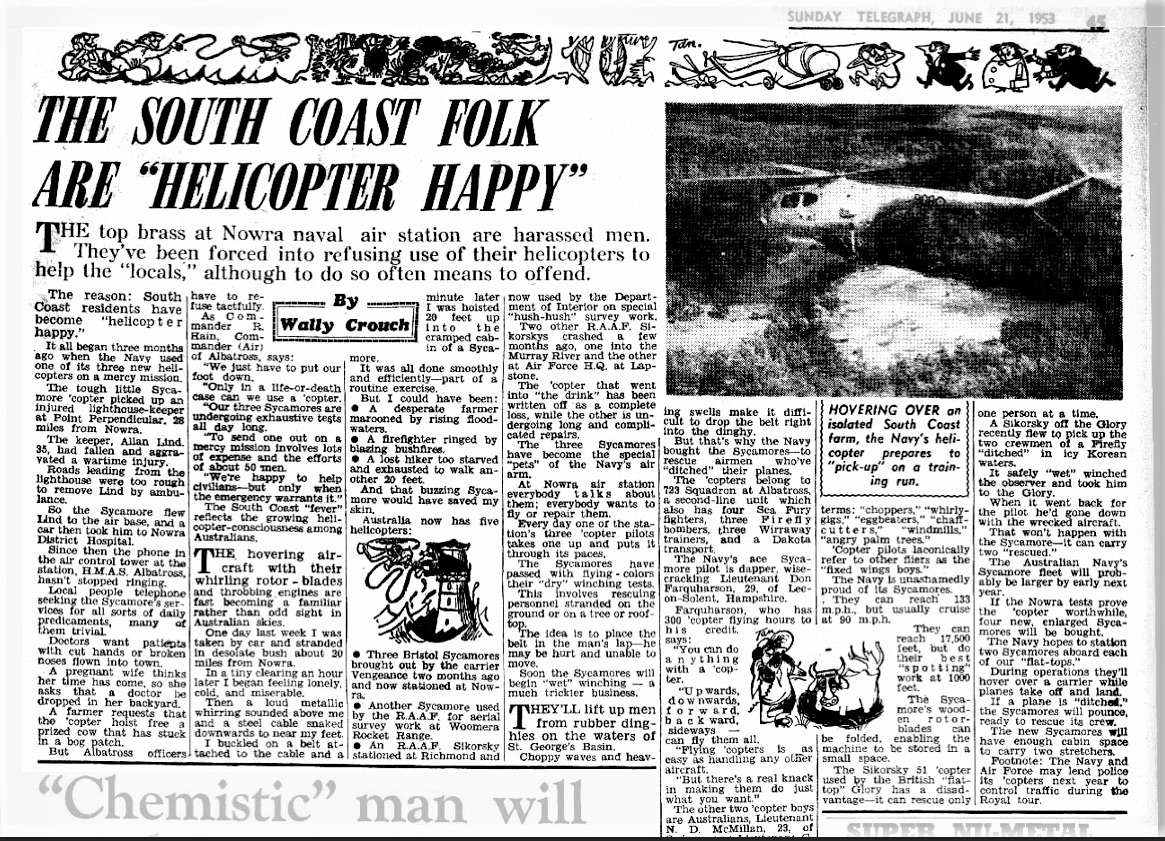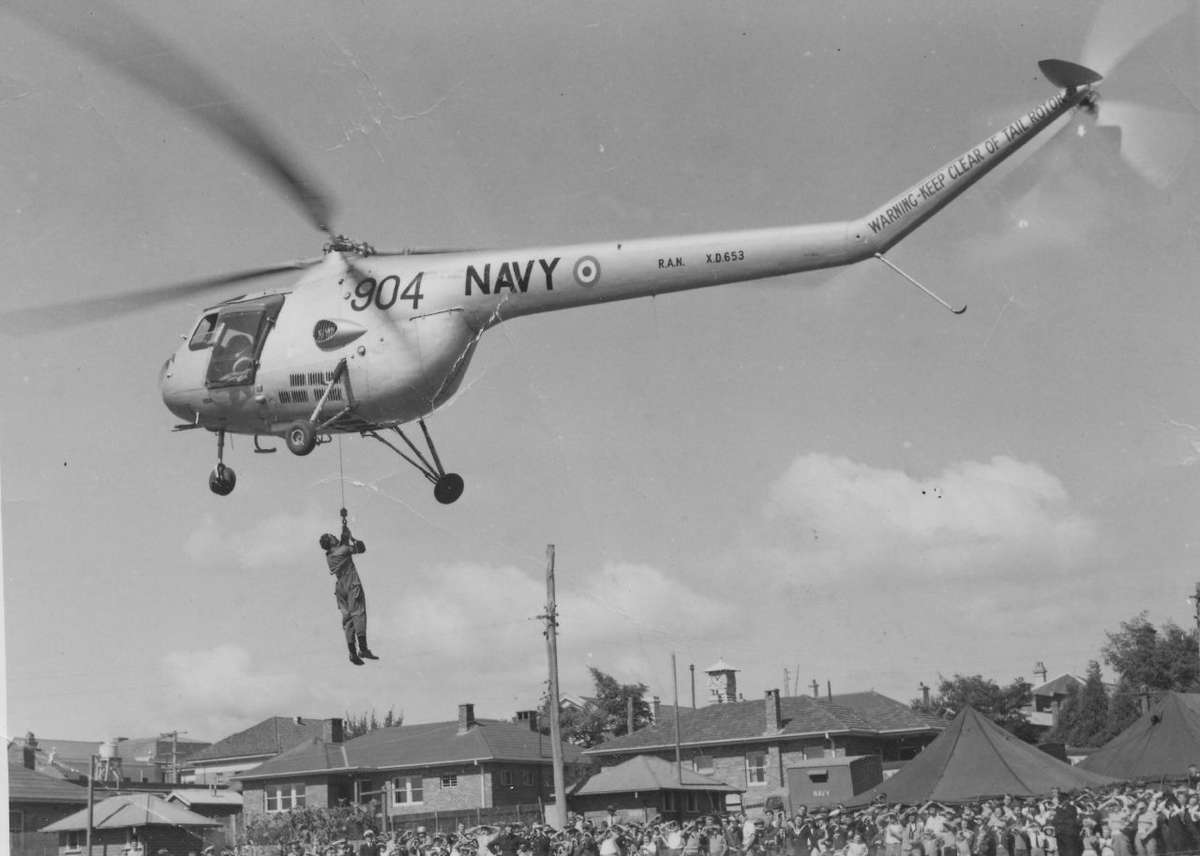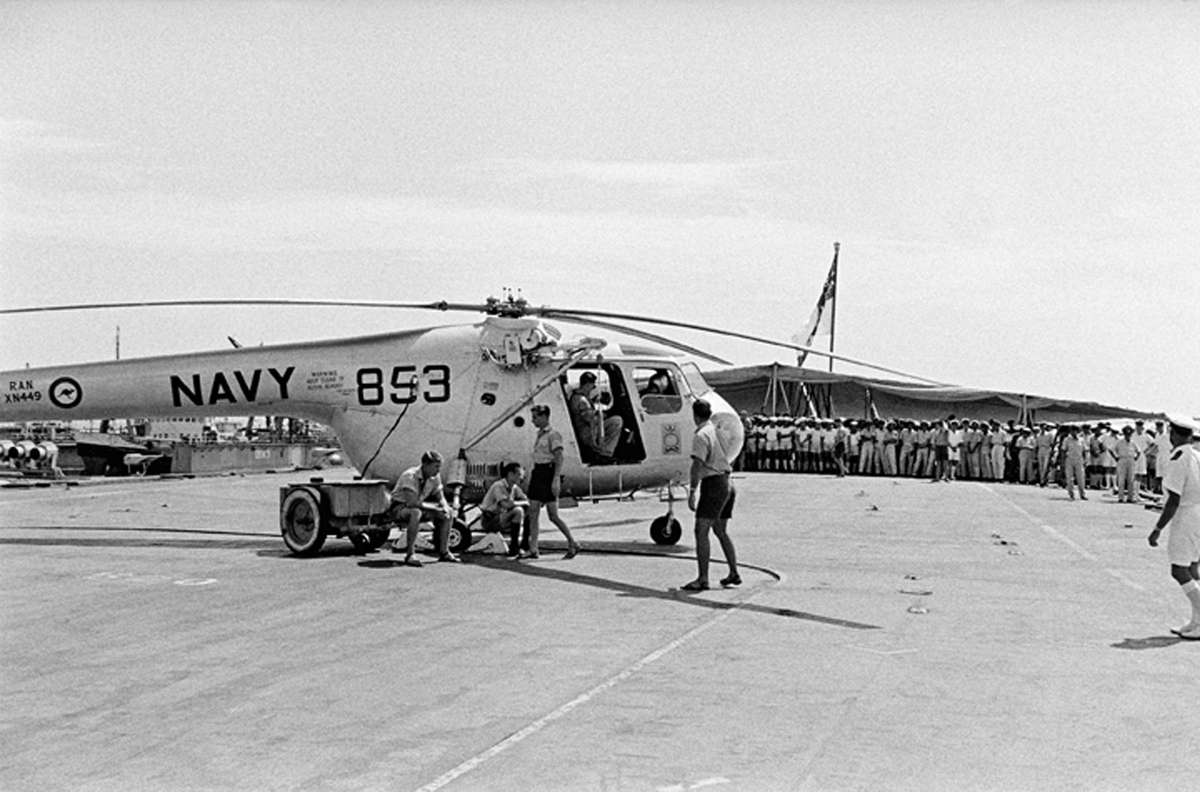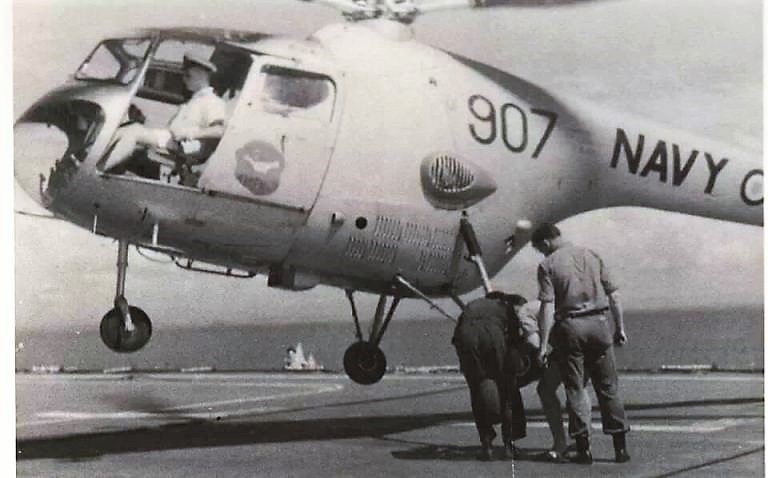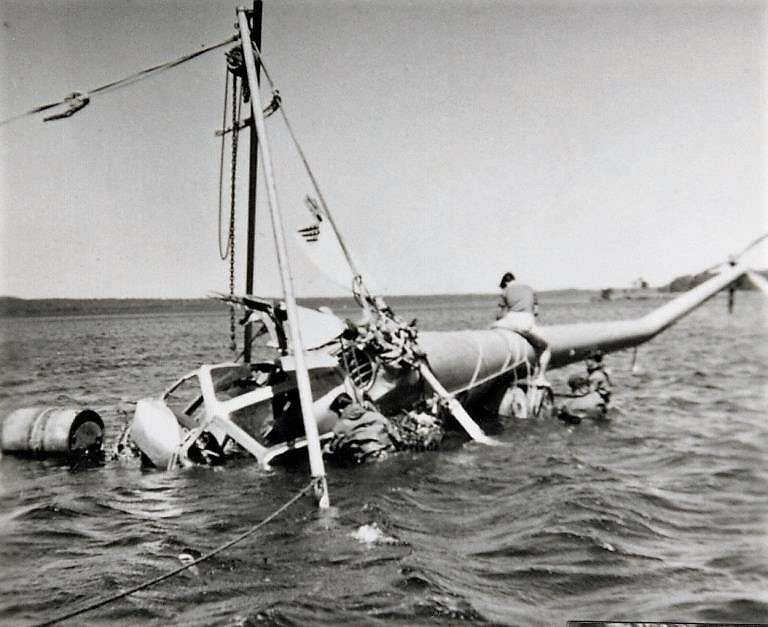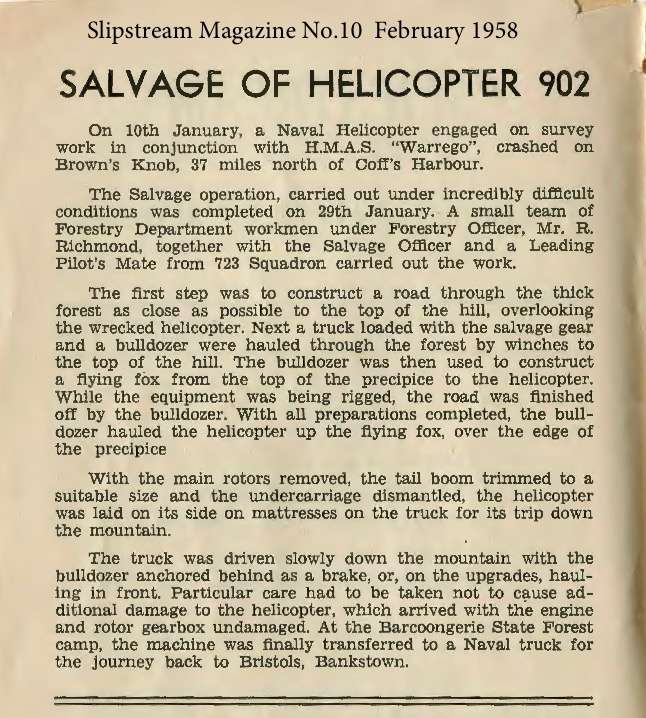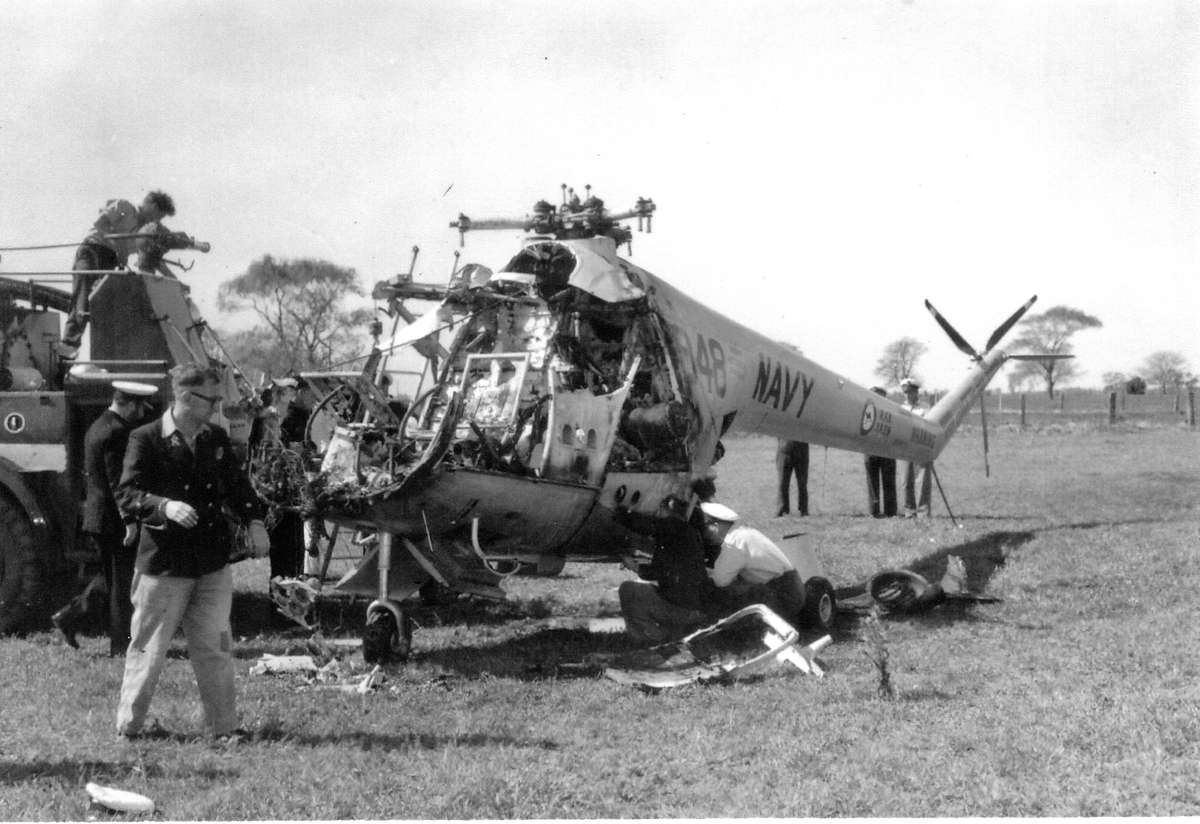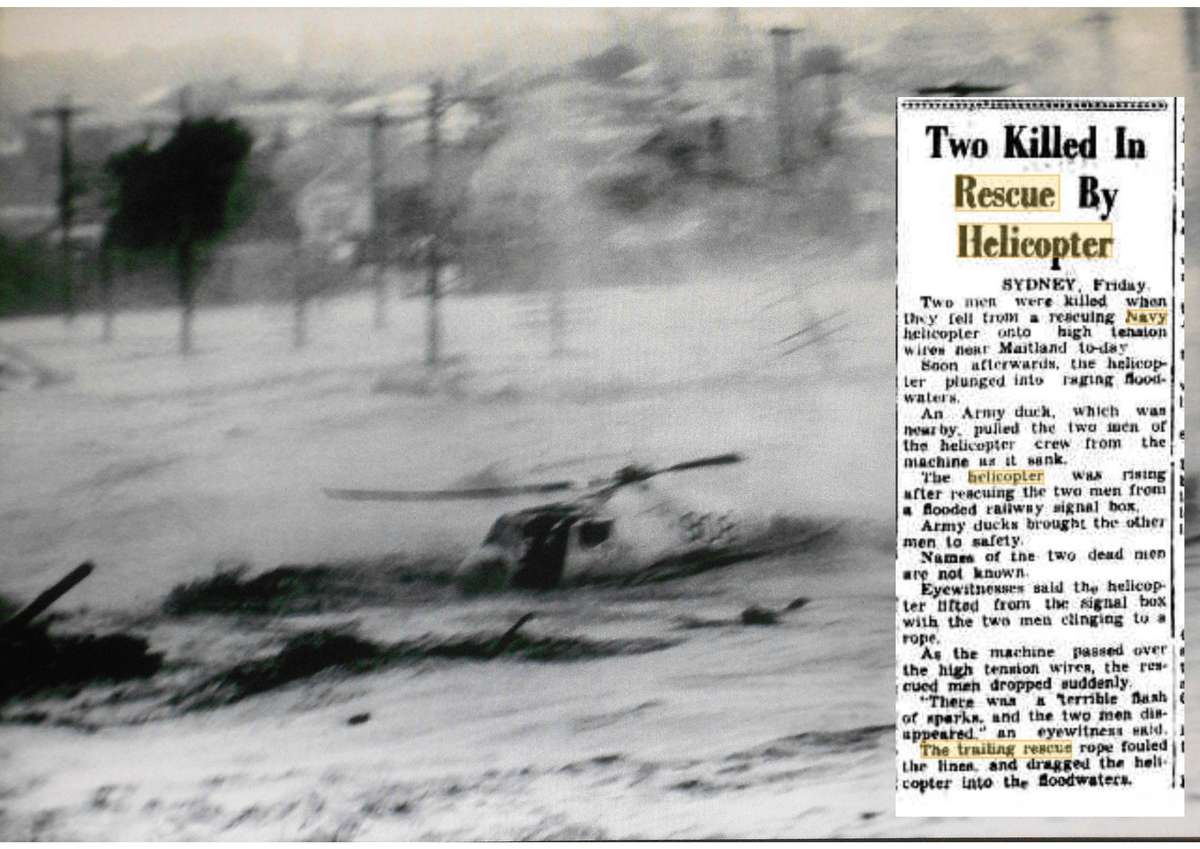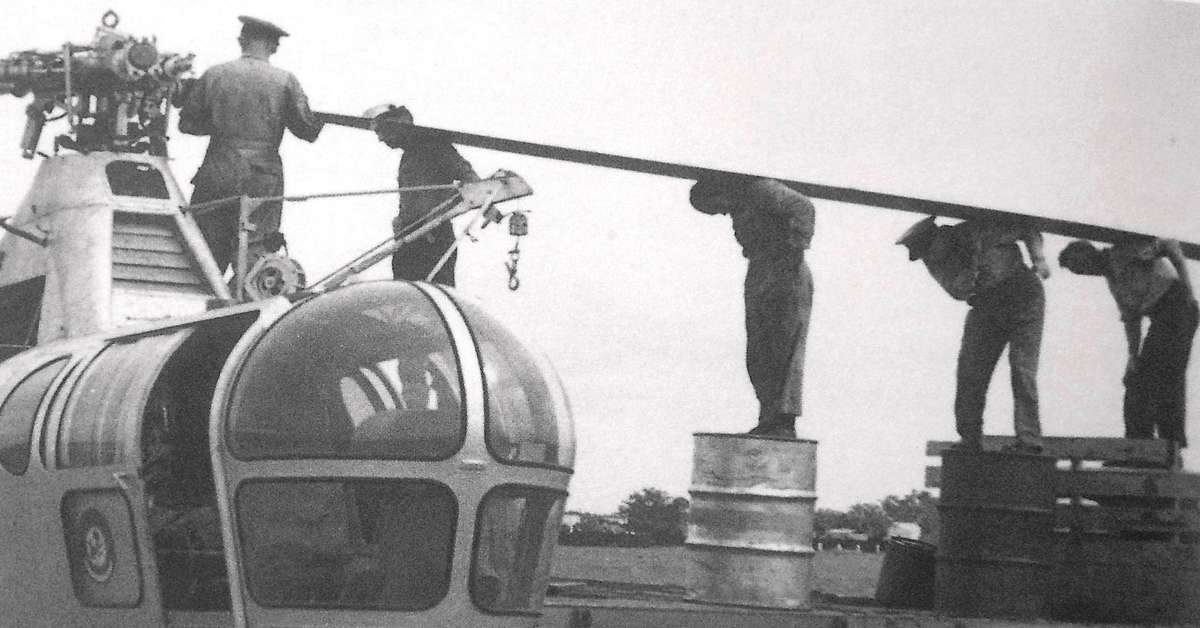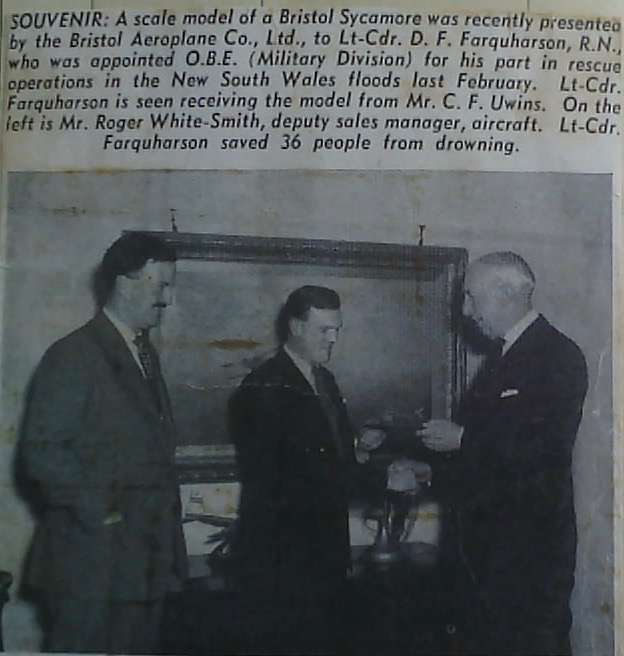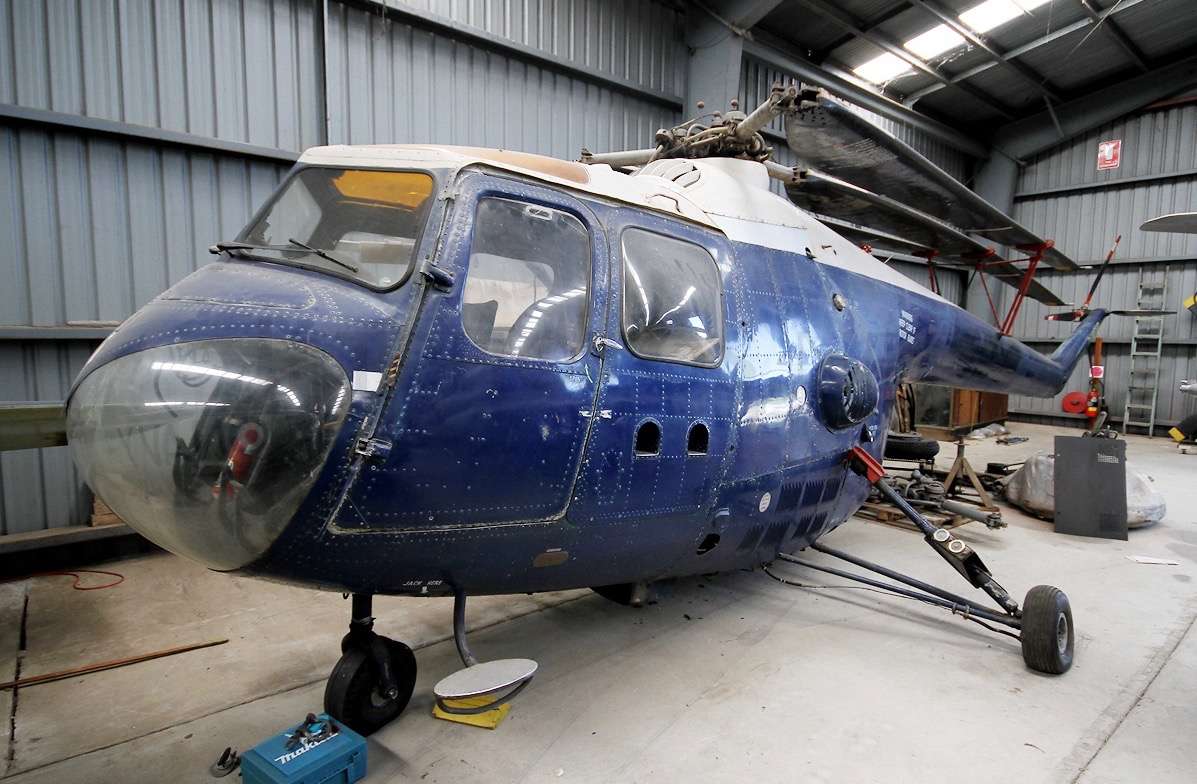Left. In the early 50s the RAN was experimenting with helicopters. HMAS Sydney, our first aircraft carrier, deployed to Korea with a borrowed USN HO3S-1 Sikorsky and crew (below). Never was it to prove its value more than on the afternoon of 26 October 1951 when a Firefly was shot down deep behind North Korean lines. With enemy troops closing in, the Sikorsky crew conducted a daring rescue at the very limit of its endurance, undoubtedly saving the lives of the two aircrew. Painting by David Marshall. 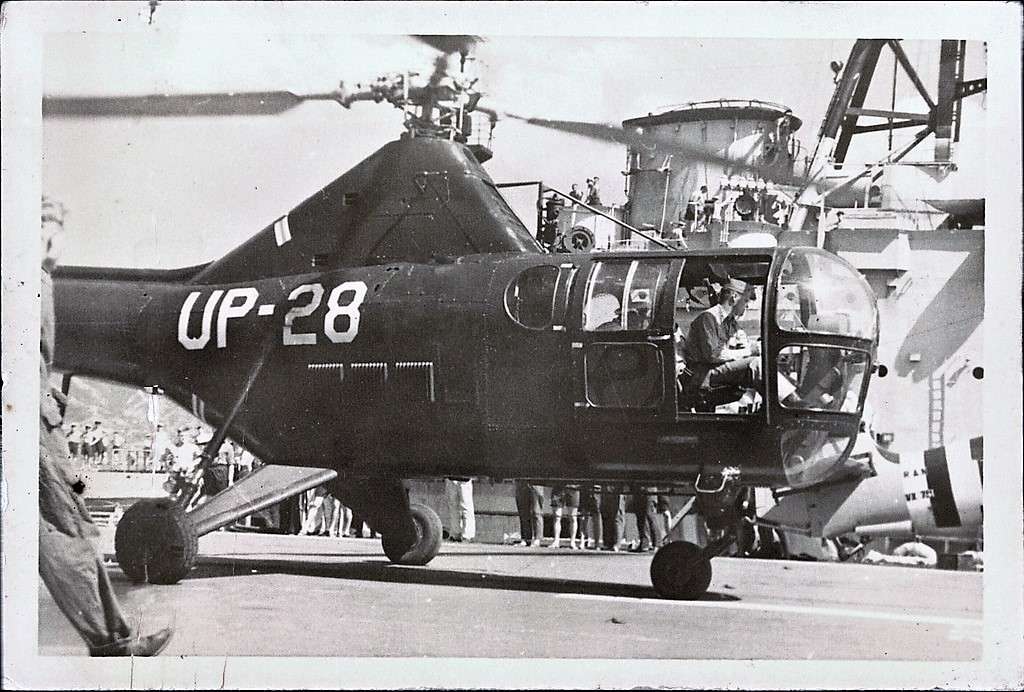
Below: A vintage poster advertising the Alvis Leonides engine and featuring HMAS Sydney. Right: An Alvis Leonides radial engine as fitted to the Bristol Sycamore helicopter. The large cooling fan in front of the cylinders was typical of engines fitted to early piston engine helicopters. (Wikipedia). The Alvis Car and Engineering Company was a British manufacturing company based in Coventry and founded in 1919, which became synonymous for quality workmanship. In 1936 an aircraft engine Division was added to the company, and the Leonides was developed during the war years.
Below. More vintage posters. The accepted practice in those days was for a manufacturer to design and build an aircraft and then extol its virtues to potential buyers – unlike the situation later when militaries would develop the specifications of what they wanted and effectively go to tender. The value of helicopters was also dawning on both civilian and military operators and competition to sell them was robust, so advertising was common.
Above and Right. A photograph/cutaway of the Main Rotor Gearbox and Rotor Head, the design of which was extraordinarily advanced for its day (compare with the massive flapping hinges of the Wessex, for example). The first version of the Sycamore the engine was mounted vertically, requiring a separate lower gearbox to
rotate the drive though 90 degrees. Later models mounted the engine horizontally, doing away with the lower gearbox: the engine output shaft connected directly to the base of the main gearbox. The more compact Leonides LE21HM engine also relocated accessories such as the generator, vacuum pump etc to drives off the gearbox, further compacting the engine and allowing these accessories to function in the case of engine failure. The main rotor speed of the Sycamore was unusually high at 287 RPM, which gave more energy in the blade disk for autorotation. Considering the manufacturing techniques of the time (mid to late 40’s) both the engine and the gearbox/rotor head were elegant and beautifully engineered designs.
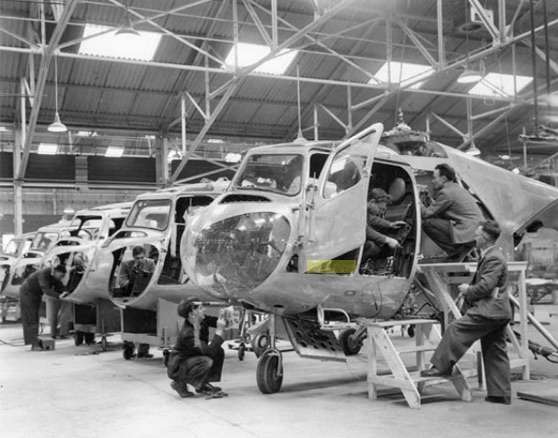 Early production of the Sycamore had been at Filton, but Bristol’s design and manufacturing capability was stretched, noting that its projects included missiles, plastic drop tanks and motor cars as well as fixed and rotary-wing aircraft. By the Autumn of 1955 Sycamore production had therefore moved to Oldmixon (near Weston-super-Mare in the UK), where the photograph on the left was taken a few months later. (Westland).
Early production of the Sycamore had been at Filton, but Bristol’s design and manufacturing capability was stretched, noting that its projects included missiles, plastic drop tanks and motor cars as well as fixed and rotary-wing aircraft. By the Autumn of 1955 Sycamore production had therefore moved to Oldmixon (near Weston-super-Mare in the UK), where the photograph on the left was taken a few months later. (Westland).
One of the problems with the Sycamore was the wooden rotor blades, although there’s no evidence that they caused undue difficulties in Australia. In early 1959 two British Sycamores crashed in Malaya, killing all on board. It transpired that in conditions of high humidity had caused de-lamination and eventual failure. The problem was solved by completely sealing the blade spar and external joints to prevent the ingress of moisture, and adding a heavy weight to the blade tip to reposition the blades’ centres of gravity. Metal blades were also investigated, although with limited success (the Aussie Sycamores never got them). The engineering difficulties of the time can be appreciated by the following story: the metal blades were built around a light allow spar machined from a hollow D-section extrusion, but the completed blade spars exhibited unacceptable variations in wall thickness. After much deliberation, Bristol found that Weston’s tide was affecting the water table below the factory (about 2km inland), thereby changing the alignment of the milling machine.
Sycamores for the RAN
The RAN’s choice of the Sycamore had been influenced by a number of factors. Firstly, there was a tendency to buy British, as in the case of the Sea Fury and Firefly, and the ships SYDNEY and MELBOURNE. Second, the Sycamore suited the RAN’s purpose – it could fly by day or night, was equipped with a rescue hoist, and its range and payload was reasonable for the time. The folding main rotor blades allowed the helicopter to be stowed in the hangar, and the use of hydronalium alloy in the airframe offered some resistence to salt corrosion. Their price was reported as £50,000 each – a tidy sum in the ‘50s.
On 16 January 1953 the first three (XA219 to XA221) were flown aboard HMAS Vengeance in the UK, arriving in Australia on 11 March. The image below shows the three helicopters as they approached the vessel, and below that, the three pilots (Lt. N.D. McMillan RAN, Lt. G. McPhee RAN and Lt D.F. Farquarson RN) meeting SYDNEY’s Commanding Officer, Captain H.M. Burrell. The ship’s ROP reported: ‘The fog…prevented the despatch of the trials aircraft, but visibility was sufficient to enable the three Bristol Helicopters for passage to Australia, to take off from RNAS Gosport. A party of 16 pressmen and Bristol Aeroplane Company representatives witnessed the formation land on at 1253, after which VENGEANCE…weighed and proceeded for the Clyde.” Over the next few days she loaded 10 Sea Furies and 21 Fireflies and 650 tons of freight from King George V dock in Glasgow, before setting course for Australia on 21 January 1953. (Image: FLIGHT magazine, 1953).
The first three RAN Sycamores to be delivered arrived in Sydney aboard HMAS VENGEANCE on 11 March 1953 and were taken on charge by 723 Squadron the same day. Below. Brand new Sycamore 907 (XA220) about to be delivered to the Squadron. (RAN image courtesy of ‘ADF Serials’). This airframe was one of the few to survive its Service life and now resides in the Fleet Air Arm Museum at HMAS Albatross.
Below. It didn’t take long before they had conducted their first Rescue operation, as reported in the Goulburn Evening Post on 02 April 1953 (below left). No time was wasted either on getting training started: the photo below right is of No.1 AFTS, with three aspiring pilots commencing their course. Most early Sycamore pilots were previously experienced fixed wing aviators, who viewed the Sycamore with varying degrees of affection. You can read their stories by scrolling down to the foot of this page and clicking on the respective “Flying The Sycamore” button.
Below. A cutting from the Sydney Daily Telegraph Sunday of June 21 1953, talking about the new helicopters. The event that triggered the public’s interest was the rescue of the lightkeeper (above left). Although written in somewhat ‘gushy’ style, it does reflect the almost immediate interest the Sycamore generated, both in the wider community and the Press. (Trove).
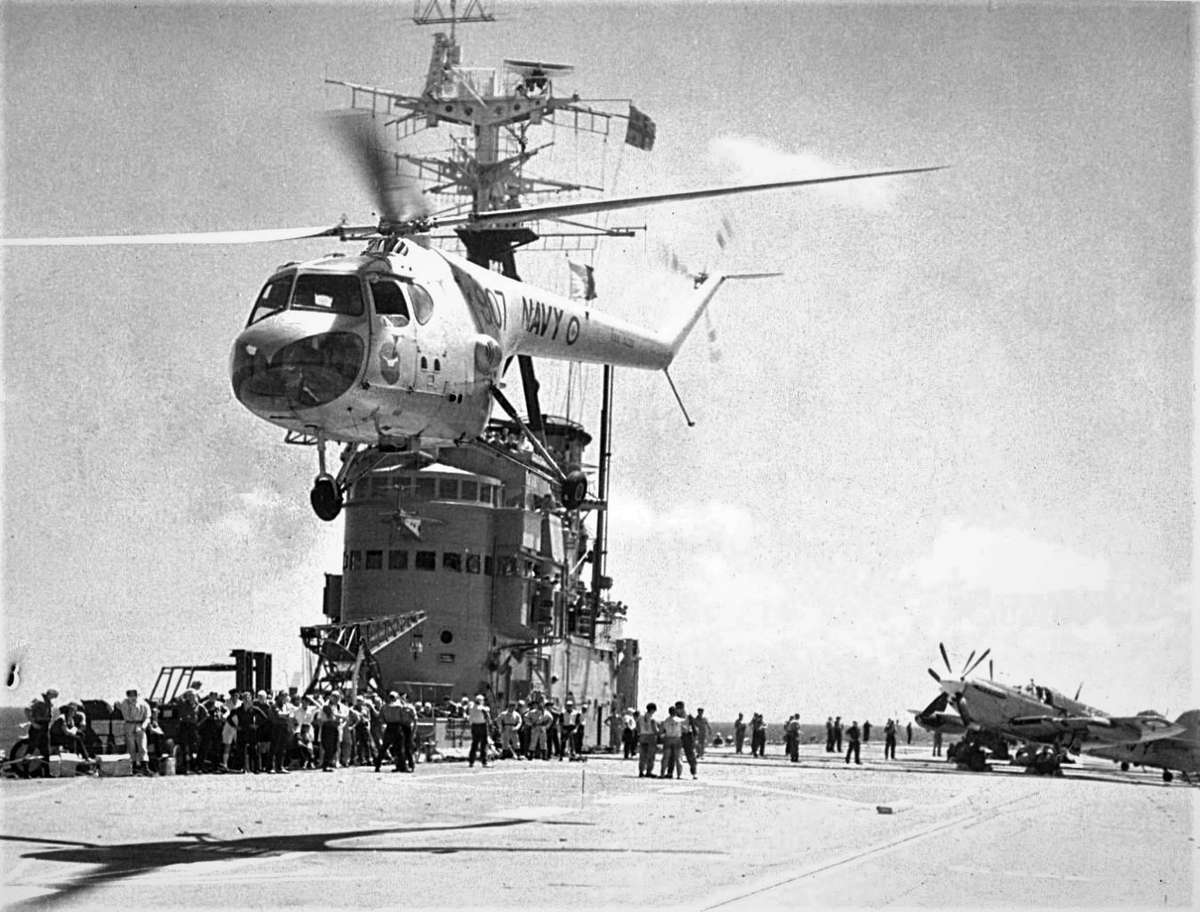
The Sycamore’s primary duty was as embarked Plane Guard, as seen in the photo (left) aboard HMAS Sydney (and later, HMAS Melbourne). Other duties included general communications (“hash and trash”) flying at sea; and training, communications and SAR ashore. Helicopters were relatively new to the general public at that time and flying displays were highly popular – both for the aircrew, who liked showing off the Navy’s new capability, and the public, who enjoyed the novelty. The selection of photographs below shows various displays.
Below: The ‘cupid’ act, where someone was suspended on the hoist with a giant cupid’s bow was a popular act, as was also suspending a bike rider below the helicopter. Occupational Health and Safety was yet to be a cause for concern!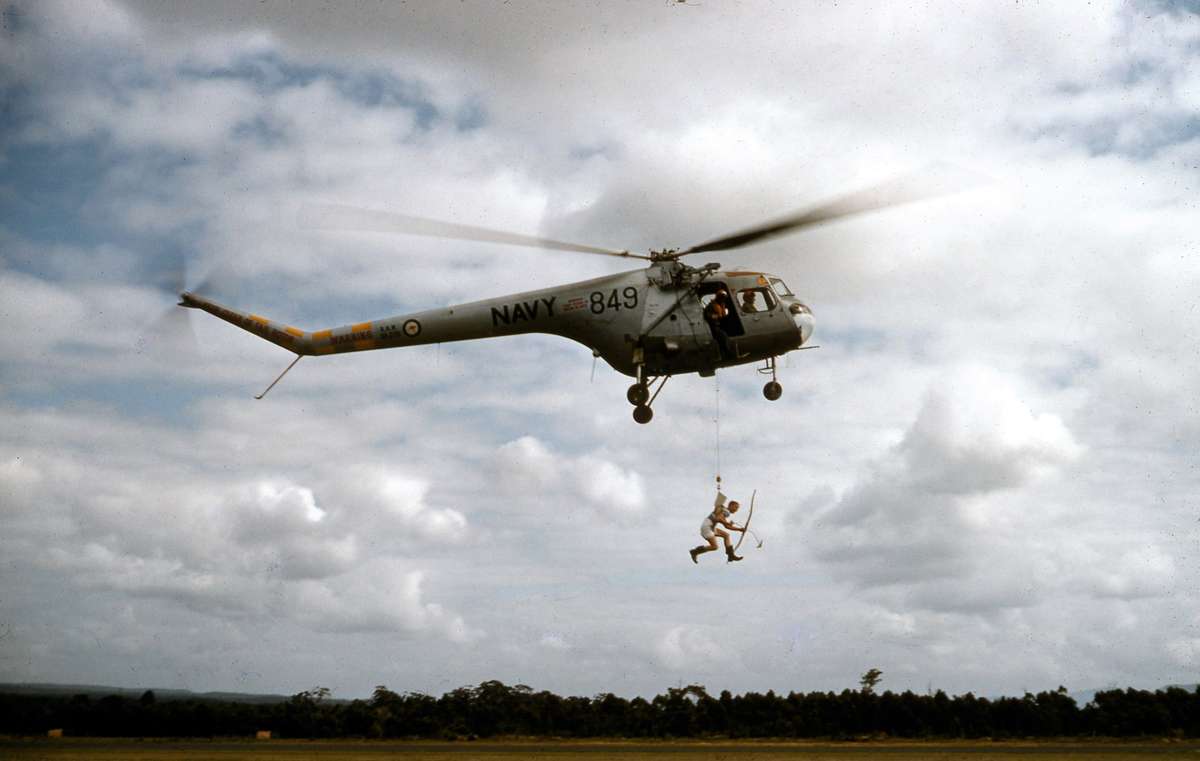
Below. Wheel changes/servicing whilst in the hover seems to have been a fairly common maintenance practice, as in this image. Note the pilot’s flying rig in the left hand photo! We have, unfortunately, been unable to identify him to see if he went on to claim social benefits for hearing loss in his later years. Below Right: Another wheel change. Raymond Howell (no shirt) and his offside Brian Carling changing the starboard main wheel at Jervis Bay airfield in 1962. Perhaps someone who worked on these helicopters can tell us why it was easier to do it in the hover than it was to jack the aircraft up whilst on the ground?

Left. Most RAN aircraft purchases were done en masse, with delivery to Australia limited only by the means to get them here – but procurement of the Navy’s 13 Sycamores was unusual, insofar as it was spread over 9 years, as can be seen from the table left. This meant that, with attrition, generally there were between four and six airframes in country at any time. Two were required for carrier ‘Plane Guard’ duties and one was typically in a major maintenance cycle with the manufacturer, leaving two – or on occasions just one, for training, SAR and communication flying. They were a scarce asset. Of the 13 Sycamores bought by the RAN, eight were lost in crashes – a relatively high attrition rate of 61.5%. Noting the early technology, difficult operating environment and the range of tasks they were expected to perform, however, it was not an extraordinarily high figure (compared with the later generation Wessex, for example, that lost some 48% of its numbers during Service).
Below. XD655 ditched in shallow water in St George’s basin on 12/10/55. It was recovered and sent to Bristol Services in Bankstown five days later, but never flew again – it was eventually sold in 1961 to Aircraft Engines & Overhauls Sydney. A video of the aircraft doing a wet winching demonstration just before the accident, and of the subsequent recovery of the wreckage, can be seen here.
Below (left) XK902 was working with HMAS Warrego on 10/01/58, conducting survey work some 37 miles north of Coff’s Harbour. It suffered an engine failure, crashing into rough terrain and rolling into a gully. Three of the five people aboard were reported as injured. Slipstream magazine of 10Feb58 reported on the difficult salvage operation (under).
Below Right: The available margin of power was always a consideration, especially in hot, windless conditions with a heavy aircraft. XD654 ditched alongside HMS Hermes off the Cocos Islands on 4Mar61 when there was insufficient power to achieve a hover. The pilot (Lt J. Dacosta) and crew survived unharmed. (Click on any image to enlarge).
Below. The NSW Floods of Feb ’55 were a stunning demonstration of the enormous utility of the helicopter in disaster operations. Although there was a dramatic moment (below) when one of the aircraft was lost in floodwaters on the 25th of that month, it should not overshadow the amazing job that the Sycamores did. (News inset – Canberra Times of 26 Feb 55). Over 100 people were rescued in the Dubbo/Maitland/Narrabri area by Navy helicopters, as well as countless other tasks. An account of the work the Fleet Air Arm did can be read in the Navy League Journal of March 1955, which can be found here.
Below left. Sometimes you have to make do: in this case a few sailors helping to change a Dragonfly blade in the field, during the NSW Floods of 1955. Below right. LCDR Farquharson RN was, like other aircrew involved in the Floods, honoured after the event- in his case an OBE. In this photograph he is representing the Fleet Air Arm for the presentation of a solid silver model Sycamore by Mr Cyril Evans, the Chairman of Bristol Helicopters. Evans was himself a very well known British pilot from the time of his entry into the Royal Flying Corps in 1916, and for the 28 years he was test pilot for Bristols during which he flew no less than 53 prototypes. In 1932 he set the world’s altitude record of 43,000 feet. In his address Mr Evans remarked that the Sycamore is the largest helicopter made outside of the USA, and congratulated 723 Squadron on the outstanding work they had performed since the helicopters arrived. The model is still visible in the joint Officers/Senior Sailors Mess at HMAS Albatross.

Above. Sycamore aircrew were occasionally tasked to fly VIPs, as in the case of Lt Seamus O’Farrell, who ferried the Duke of Edinburgh from Government House, Sydney, to a gathering of school kids in Kensington in 1956. Somewhat ironically, his particular aircraft was one of the few to survive its service life, having never suffered an engine failure – but on this occasion it came close, as he recounts in the image above right.
Left. Another VIP trip, this time the Governor-General with LCDR Ken Douglas, into Lord Howe and Norfolk Island. Helicopters were still very much a novelty and this mode of arrival would have been a very swanky way to arrive for ceremonial visits to such communities. Gordon “Pancho” Walter, one of the sailors pictured, was also an aircrewman of renown and spent most of his career on 723 Squadron. (Image: Navy News October 1963). You can read Ken Douglas’s account of Flying the Sycamore here.
Below: Sycamore 853 serial XN449 about to do a mail drop on HMAS Quiberon, It is evening in February 1960 with the ship in the Tasman Sea off the South Coast of NSW. The two people standing aft of the mortar are ready to exchange mail bags. Photo: Kim Dunstan.

Above and Below: The Sycamore as it should be remembered. Although it was only in Service for ten years, the aircraft introduced a potent new capability into the Fleet, made itself indispensable and laid the foundations for rotary-wing know-how that has served the RAN brilliantly ever since. It is easy to think the technology was old and unreliable – but by the standards of the day it was years ahead of its time and performed extraordinary service in support of both the Fleet, and the Fleet Air Arm.
No one could ever say that visibility from the pilots’ seats was was limited, as the photo below shows. It was taken from the original Bristol promotional brochure, so may not exactly reflect what the RAN aircraft had – but it would be close. By the standards of the day the instrument panel was neat and well laid out. Note the single Collective Lever between the two seats with its distinctive twist-grip throttle mounted at right angles. Later helicopters splashed out and gave each pilot their own Collective, which avoided the problem of necessary ambidexterity when changing seats. The remaining controls – a Cyclic Stick and Rudder Pedals – were conventional.
The Survivors
Of the 13 Sycamores bought by the RAN, only five survived destruction though accidents. Remarkably, all five are, more or less, in one piece – although one considerably less so than the others (and possibly not for much longer). XA220 and XD653 (Left upper and lower) are in the Fleet Air Arm Museum at Nowra, the home of the Fleet Air Arm. Centre Left: XD592 was sold in September 1965 and registered as VH-BAW. It was subsequently acquired by the Camden Museum of Aviation, a privately owned collection. Centre Right: XN448 was also sold in September of 1965 and registered as VH-SYC by Associated Helicopter Services of Bankstown. It was damaged near Turkey Creek (south of Wyndham, WA) in December of 1969 when the pilot over-pitched the rotors, which then struck trees. After numerous insurance claims the aircraft became the property of the company’s creditors which was, by then, in liquidation. Eleven years later it was sold for $1.00 to the RAAF Association, Perth, which attempted to salvage it using a RAAF Chinook, but the attempt was abandoned though fears the Sycamore might disintegrate during the lift. Its carcass still rests at the crash site. Right. XN450 was sold in Sept 1965 to Business Aviation (Bankstown) but eventually found its way to the hands of a private collector, Mr Syd Beck, where it was preserved in ‘The Beck Collection’ in Mareeba, QLD. Mr Beck died in 2007 and some ten years later his family decided to sell/dispose of the collection. The current whereabouts of this aircraft is not known, but we would welcome any such advice.

